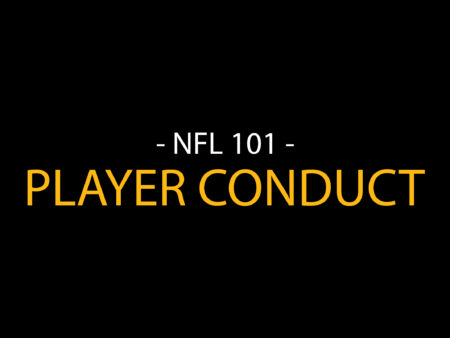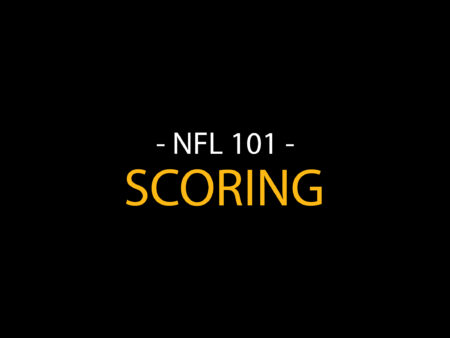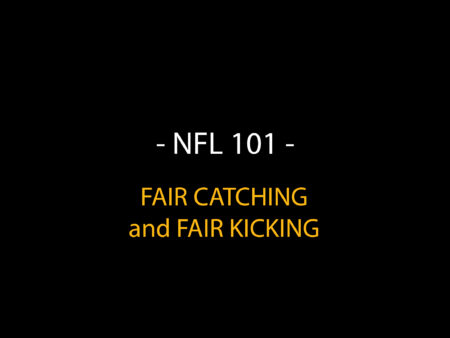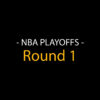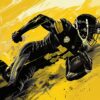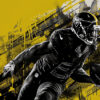Section 1: General Rules
Refusal of Penalties
Imagine you’re given a penalty and you can just say “No thank you.” That’s NFL teams with penalty refusals. They can decline penalties, kind of like declining broccoli on your plate, and play continues as if the foul never happened.
- Note: If it’s during a try that fails, they can decline the yards lost and redo the play from the start.
- Exception: For double fouls, it’s a different game (See Section 5).
Number of Down After Penalty
- Team A Fouls: If Team A’s dance with the foul devil sends them backyards, they don’t get a fresh set of downs unless the penalties involve loss of down.
- Combination Penalties: These are special; they include goodies like losing down and yards for infractions like illegal forward passes.
- Line to Gain: If penalties shuffle the possession dance, the yard sticks for gaining a new set of downs stay put unless stated otherwise.
Section 2: Special Enforcement for Penalties
Half-Distance Penalty
When penalties could march half the field, we cut them short. Penalties will only take half the distance to the goal line instead of the full penalty yards. It’s like getting a discount on your yard losses!
Foul Behind a Goal Line
- Defensive Foul Behind Goal Line: Penalty starts from the goal line, but if it’s a touchback situation, start from the 20 or 25-yard line.
- Offensive Foul Behind Goal Line: That’s a safety, folks.
- Offensive Foul Behind Defensive Goal Line: We start from the defensive goal line.
Foul During a Score
If a foul happens during a touchdown dance or field goal fiesta:
- Penalties on Touchdowns: Can choose to enforce on the try or the kickoff.
- On Field Goals or Tries: Foul penalties can be added to the kickoff.
Section 3: Spot From Which Penalty Is Enforced
Governing Provisions
Enforcement spots help officials decide where to assess penalties. They act like bookmarks in the chaotic story of a football game, marking where things went awry.
We have a GPS for penalties called the Enforcement Spot:
- Previous Spot: Where we last snapped the ball.
- Spot of the Foul: Where the naughty action happened.
- Spot of Change of Possession: Where the new team grabbed the ball.
Foul by Non-Player
Non-players (like coaches or sideline personnel) who jump into the action with fouls find their penalties enforced just like players’ fouls, sticking to the general playbook of penalty enforcement.
Enforcement Spot Not Governed
When the rulebook doesn’t specify exactly where to enforce a penalty (a rare grey area in the well-detailed NFL rulebook), the default spot is where the foul occurred. It’s like saying, “Where you mess up is where you pay up.”
Spots of Enforcement
Understanding where penalties are enforced can be as tricky as a quarterback reading a blitz. Here’s the rundown:
- The Previous Spot: The default setting. This is where the play started, and it’s where we rewind to if a penalty happens.
- The Spot of the Foul: Directly where the foul occurred. If a player commits holding at the 25-yard line, that’s our mark.
- The Spot of a Backward Pass or a Fumble: If the ball’s dropped or tossed back and there’s a foul, mark the spot where the ball last danced.
- The Dead Ball Spot: Where the ball was when the play stopped. If the whistle blows here, penalties get marked here.
- The Succeeding Spot: The next play’s starting line. If the foul is between downs, this is where we set up shop.
- The Other Try Spot: If a penalty occurs during a conversion attempt and there’s a need to retry from a different spot, this is the alternative stage.
- The Spot of a Change of Possession: If a team intercepts or recovers a fumble and there’s a foul by the other team, the spot of the foul dictates where the penalty is enforced unless the rules specify otherwise.
Basic Spot
The “Basic Spot” is a reference point used for penalty enforcement which varies based on the type of play:
- Running Play (no possession change): The spot where the ball is dead.
- Running Play (with possession change): Where the ball was fumbled.
- Backward Pass or Fumble: Where the backward action started.
Three-and-One Method of Enforcement
This method is used primarily for running plays and helps determine the penalty enforcement spot based on who fouled and where:
- Defense Fouls (before the Basic Spot): Penalty is enforced from the Basic Spot.
- Offense Fouls (before the Basic Spot): Penalty is enforced from the spot of the foul.
- Any Foul (beyond the Basic Spot): Penalty goes back to the Basic Spot.
Exceptions to Note
- Offensive fouls behind the line: Enforced from the previous spot unless it’s in the end zone, which results in a safety.
- Offensive fouls in the opponent’s end zone: Enforced from the goal line.
- Defensive fouls and possession changes: If the foul occurs after the ball changes hands, penalties are generally enforced from the spot of the foul or the previous spot, depending on who is penalized and where the foul happened.
Section 4: Automatic Disqualification
Players who double-dip into unsportsmanlike actions get a free ticket to the locker room showers. Two major penalties in one game, and you’re out!
Conclusion
Penalties in the NFL can seem like a complex dance of yards, downs, and spots. But remember, it’s all about keeping the game fair and fun. So next time you see a flag on the play, think of it as the refs keeping everyone honest.
